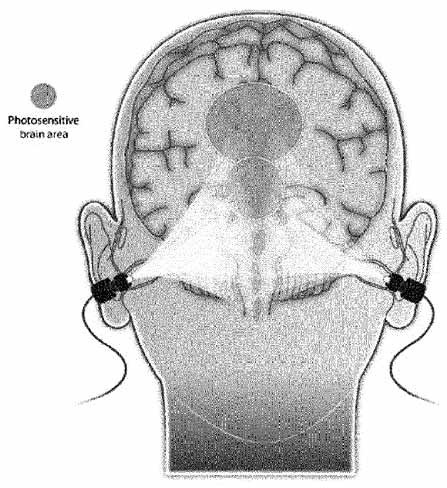Marc Abrahams's Blog, page 484
June 19, 2013
Frightening things a-fly around MRI machines
The Simply Physics site collects images of things that flew at and into MRI machines, attracted magnetically:
DANGER! Flying Objects!Once you’ve been in the MRI field for any length of time, you start hearing all of the various horror stories about thing that have flown into a scanner. Often, newcomers don’t take the real danger of flying objects seriously until they witness an oxygen tank or gurney flying into a magnet themselves. This page will contain a collection of pictures and stories of metalic projectiles. Please show this page to all MRI newcomers, for their own safety and the safety of their patients!
[via Ivan Oransky]

Beetles, bottles, and enraptured togetherness
that resulted in the 2011 Ig Nobel biology prize. That prize was awarded to Darryl Gwynne (of CANADA and AUSTRALIA and the UK and the USA) and David Rentz (of AUSTRALIA and the USA) for discovering that a certain kind of beetle mates with a certain kind of Australian beer bottle. [Gwynne and Rentz published accounts of that discovery, in two papers: "Beetles on the Bottle: Male Buprestids Mistake Stubbies for Females (Coleoptera)," D.T. Gwynne, and D.C.F. Rentz, Journal of the Australian Entomological Society, vol. 22, , no. 1, 1983, pp. 79-80 — and "Beetles on the Bottle," D.T. Gwynne and D.C.F. Rentz, Antenna: Proceedings (A) of the Royal Entomological Society London, vol. 8, no. 3, 1984, pp. 116-7.
Krulwich's essay, under the headline "The Love That Dared Not Speak Its Name, Of A Beetle For A Beer Bottle", includes this passage:
Looking even closer, they recognized it as an Australian jewel beetle, and looking closer, they noticed it had (as they wrote later) its "genitalia everted — attempting to insert the aedeagus," which is a very polite way to say they were looking at a beetle attempting to mate with a glass container. Clearly, this was a very confused individual. But then they found three more stubby beer bottles, and on two of them, surprisingly, were more male beetles, also "mounting" their bottles. That makes three frustrated males. Hmmm. That got them interested. So
This BBC Plane Wild documentary looks, videographically, at the phenomenon:
the eminent scientist/blogger SciCurious attended the 2011 Ig Nobel Prize ceremony, where she interviewed the scientists who made the discovery. Read about it in her essay called “IgNobel Prize WINNER: The beetle and the beer bottle, a tragic love story“.

A mighty editorial board, 20,000 strong
 The Journal of Molecular and Genetic Medicine boasts a largest editorial board, perhaps the world’s largest. The journal sent a note to investigator Kurt Verkest, who forwarded it to us. The note reads:
The Journal of Molecular and Genetic Medicine boasts a largest editorial board, perhaps the world’s largest. The journal sent a note to investigator Kurt Verkest, who forwarded it to us. The note reads:
Dear Dr. K R Verkest,
Journal of Molecular and Genetic Medicine (JMGM), an Open Access peer-reviewed International journal promotes ongoing research and information exchange. Papers may be submitted from any discipline related to Molecular and Genetic Medicine and suggested content areas include but are not limited to Cancer biology and therapy…
Why with Us?
✓ Publishes the most important research in the field and distributes it to wide range of readers
✓ Quality Peer-review: More than 20,000 eminent scientists in the editorial board handling the review process…
BONUS: The journal’s web site lists only about 20 of those 20,000.
BONUS: The journal lists three (3) editors-in-chief. The list of editors-in-chief here is reproduced from the journal’s web site.

Extraocular Phototransduction: more than meets the eye? (part 2)
 We recently drew attention to the 1998 discovery at Cornell regarding the possibility of tweaking one’s cicadian rhythms by shining a bright light at the back of one’s knees. But continuing research into extraocular (outside the eye) light stimuli has turned to the possibility of a more direct route. Why not shine a light directly into one’s brain? Fortunately, there’s no need to resort to trepanning, because (at least) two convenient pathways already exist for brain illumination. Namely the ear canals. A research team from the University of Oulu, Finland (“Creating Innovation for the Future”) tested volunteers while they underwent blood oxygen level dependent (BOLD) functional magnetic resonance imaging scanning (fMRI) as a bright light was delivered via their external ear canal :
We recently drew attention to the 1998 discovery at Cornell regarding the possibility of tweaking one’s cicadian rhythms by shining a bright light at the back of one’s knees. But continuing research into extraocular (outside the eye) light stimuli has turned to the possibility of a more direct route. Why not shine a light directly into one’s brain? Fortunately, there’s no need to resort to trepanning, because (at least) two convenient pathways already exist for brain illumination. Namely the ear canals. A research team from the University of Oulu, Finland (“Creating Innovation for the Future”) tested volunteers while they underwent blood oxygen level dependent (BOLD) functional magnetic resonance imaging scanning (fMRI) as a bright light was delivered via their external ear canal :
“Light was produced by two 3 W LEDs (main light spectrum peak at blue light 465 nm and a secondary peak at 550 nm) and delivered via 5 meters long polycarbonate colourless fiber optic light guides connected to ear-plugs in the subject’s ears while inside the scanner.”
Findings from the study :
“…suggest that the brain possesses photosensitive properties, which will have interesting implications for the modulation of brain function and understanding the basic physiology of the brain.”
But, the authors add :
“The mechanism for the phototransduction of the brain tissue remains to be discovered and we are currently investigating it in more depth.”
NOTES:
[1] “ Some of the authors have conflicts of interests with a company, Valkee Ltd., that develops and sells devices for bright light stimulation via ear-canal. Authors’ connections with Valkee Ltd. are: Nissilä and Aunio are company founders. Nissilä, Aunio, Takala and Timonen are share-holders (varying from major to minor). Nissilä, Aunio and live-in partner of Starck are employed by Valkee Ltd. Valkee Ltd. did not have a role in the decision to submit the paper for publication.”
[2] The company, Valkee, has recently received a US patent for their invention ‘Portable Ear Light Device’ and also have a European patent pending for a Device and method for altering dopamine level from which the illustration above is taken.
[3] Many thanks to John Hoyland’s Feedback column in New Scientist, 10 May 2013 ‘Light up your Brain’ for drawing attention to the Valkee ear light.
BONUS : (unrelated, except via wordplay) ‘Me ears are alight’

June 18, 2013
Literary experiment: An attine ant’s perspective on human farming
 Sedeer el-Showk [pictured here] does what might be called a literary experiment: describing human agriculture from the perspective of “attine ants, a group of ants which have evolved a mutualistic relationship with certain fungi that can only be described as a form of agriculture”:
Sedeer el-Showk [pictured here] does what might be called a literary experiment: describing human agriculture from the perspective of “attine ants, a group of ants which have evolved a mutualistic relationship with certain fungi that can only be described as a form of agriculture”:
In addition to the difficulties of communication, other biological limitations of humans may serve to explain some of the shortcomings of their agricultural practices. For example, while we can provide important liquid supplements to our fungi, individual humans appear unable to directly produce the nutrients needed by their crops, which are instead provided by the activity of specialized castes working in structures dedicated to this task. Studies have demonstrated that the fragrant anal paste produce by humans is a suitable substrate for plant growth; surprisingly, however, humans do not take advantage of this resource. Some researchers have suggested that humans may be unable to properly ensure the hygiene of crops grown in this manner and would thus be exposed to an unacceptable risk of parasitism, although others contend that the anal paste has in fact been used by some colonies. Clearly, further research is needed to understand this aspect of human agriculture….
In the same blog post, he also describes ant agriculture from the perspective of humans.

Jessica Halpin joins Luxuriant Flowing Hair Club for Scientists (LFHCfS)
Jessica Halpin has joined the Luxuriant Flowing Hair Club for Scientists (LFHCfS). She says:
I’m a MS-wielding microbiologist at a large government agency. I troubleshoot and develop protocols for molecular subtyping of bacterial foodborne pathogens.
Jessica Halpin, MS, LFHCfS
Research Microbiologist
Centers for Disease Control and Prevention
Atlanta, Georgia, USA


Fluctuations, fluctuatingly and then some
Frank Wilczek writes, in his essay “What is the Electron“, of how people have figured out how to make better and better (and better) measurements pertaining to that teeny tiny particle:
“Theoretical calculations have become intricate, now including fluctuations in fluctuations in fluctuations.”
A version of that essay is part of Nature magazine’s celebration of the 100th anniversary of Neils Bohr’s idea that the atom is a quantum beastie.

Following in the wingbeats of the Star Wars locusts…
Newly reported research with dragonflies follows, at least in spirit, in the wingbeats of the Ig Nobel Prize-winning locust/Star Wars research.
Greg Miller reports on the new work, in Wired:
Scientists Put Backpacks on Dragonflies to Track Their Brains in Flight
The brain of a dragonfly has to do some serious calculations — and fast — if it hopes to nab a mosquito or midge in midair. It has to predict the trajectory of its prey, plot a course to intersect it, then make adjustments on the fly to counteract any evasive maneuvers. Neuroscientist Anthony Leonardo created the tiny dragonfly backpack above to study how circuits of neurons do these computations. The backpack weighs 40 milligrams, about as much as a couple grains of sand, equal to just 10 percent of the dragonfly’s weight. Electrodes inserted into the dragonfly’s body and brain record the electrical activity of neurons, and a custom-made chip amplifies the signals and transmits them wirelessly to a nearby computer….
in 2005, the Ig Nobel peace prize was awarded to Claire Rind and Peter Simmons of Newcastle University, in the U.K., for electrically monitoring the activity of a brain cell in a locust while that locust was watching selected highlights from the movie “Star Wars.” [They described their research in the study "Orthopteran DCMD Neuron: A Reevaluation of Responses to Moving Objects. I. Selective Responses to Approaching Objects," F.C. Rind and P.J. Simmons, Journal of Neurophysiology, vol. 68, no. 5, November 1992, pp. 1654-66.]

June 17, 2013
How to draw a line on a road
This brief video by Koki Tanaka shows one way to draw a line on a road:

Highly Specific Hair-Care Psychological Effects Research
This study is highly specific, leaving room for other investigators to do other specific investigations:
“Effects of Makeup, Perfume and Skincare Product Usage and Hair Care Regimen on Circadian Typology, Sleep Habits and Mental Health in Female Japanese students Aged 18-30,” Risa Nishihara, Kai Wada, Osami Akimitsu, Milada Krejci, Teruki Noji, Miyo Nakade, Hitomi Takeuchi, Tetsuo Harada, Psychology, vol. 4, no. 3, March 2013. The authors, at Kochi University, Japan, the University of South Bohemia, Czech Republic, and Tokai Gakuen University, Japan, explain:
“The students who regularly carried out a hair care regimen showed a significantly lower frequency of becoming angry after a small trigger and of losing control due to anger than those who did not. Makeup, perfume and skin care products might be possible to be related to better sleep health for students. Moreover, hair care may help maintain mental health in female students. Makeup, perfume and skin care products might be implied to become chemical, mechanical and/or psychological stimuli as zeitgebers for circadian clock of students.”
(Thanks to investigator Neil Martin for bringing this to our attention.)
BONUS (probably unrelated): The corpse treatment patents assigned to Risa Nishihara (who may well be a different Risa Nishihara from the lead author of the hair care study)

Marc Abrahams's Blog
- Marc Abrahams's profile
- 14 followers



